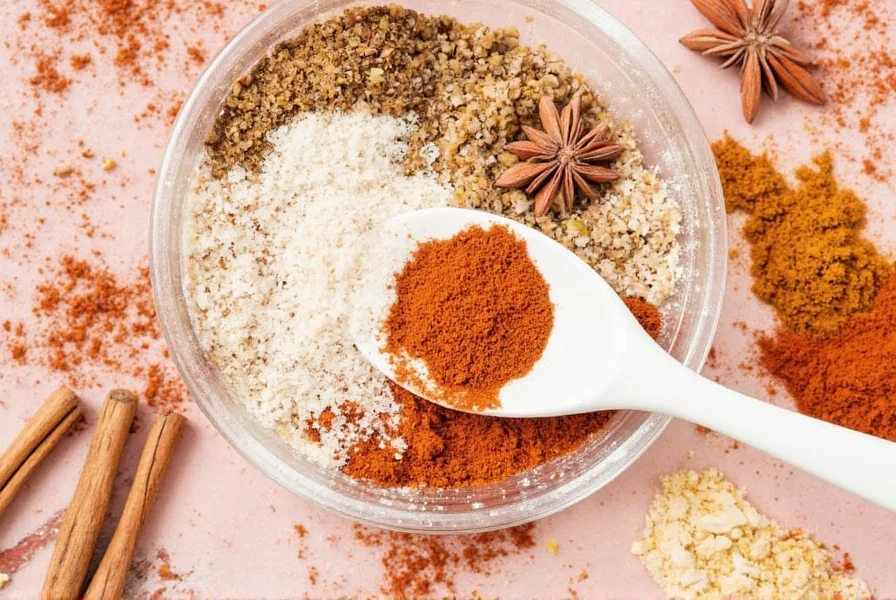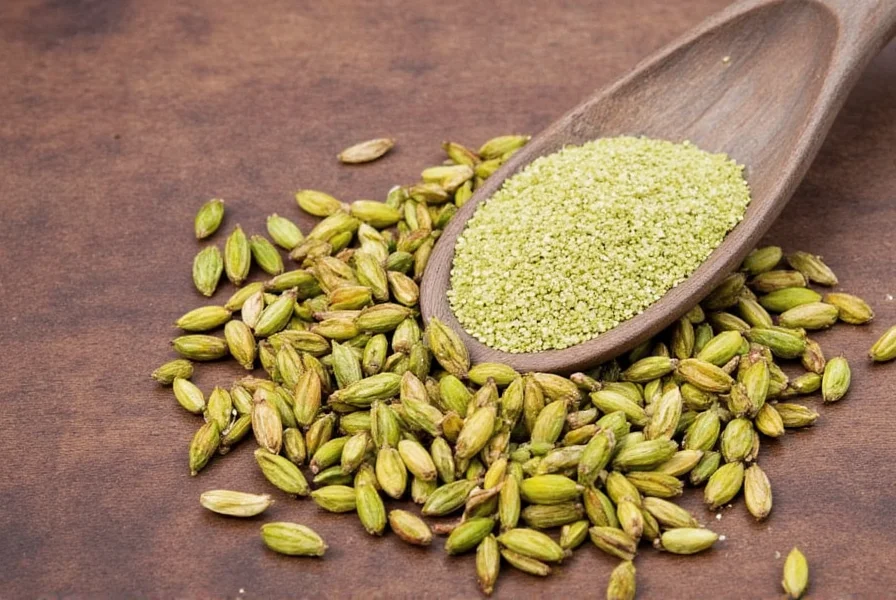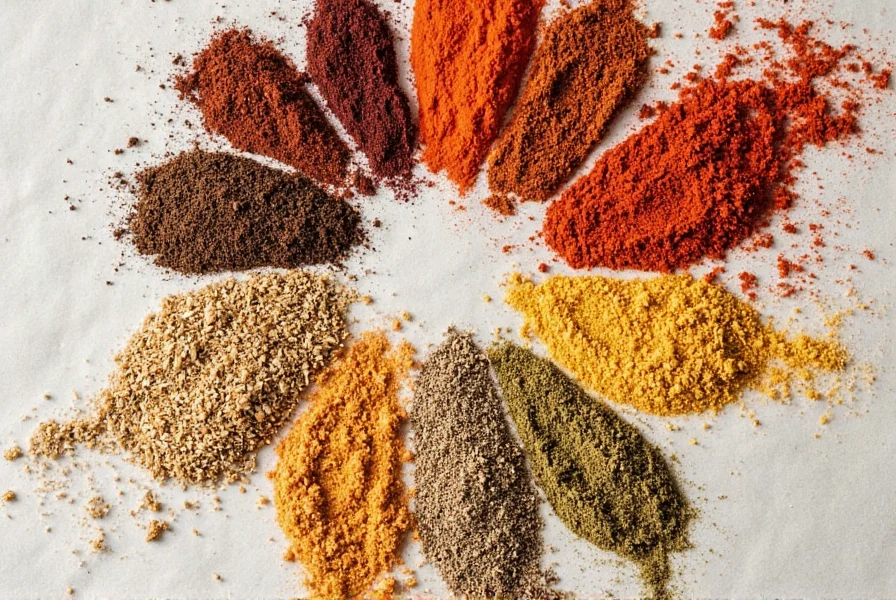If you've ever found yourself staring into the spice rack wondering, "How do I make my pasta primavera chicken actually taste like something?", you're not alone. While the classic dish brings together tender chicken, fresh veggies, and al dente pasta, it often ends up tasting like... well, blandness in disguise.
In this article, we're turning that around with some genius spice hacks, smart storage tips, and clever flavor pairings to transform your next pasta primavera chicken into a showstopper — no Michelin stars required.
- Why Spice Matters in Pasta Primavera Chicken
- Essential Spices for Your Dish
- Hack #1: Blend Spices for Maximum Impact
- Hack #2: Layer Them Right — Timing is Everything
- Hack #3: Salt Like a Pro
- Hack #4: Finish with Flavor Boosters
- Storage Tips: Keep Your Spices Fresh and Fabulous
- Buying Guide: Best Spice Brands for Your Pasta Primavera Chicken
- Bonus Hacks: Beyond the Basics
- Frequently Asked Questions
- Conclusion: Spice Up Your Life (and Your Plate)

Why Spice Matters in Pasta Primavera Chicken
Pasta primavera chicken is a blank canvas. It's packed with potential but without the right spices, it's just a plate of food waiting to be forgotten. Let's face it — veggies are good for you, but they won't save your dish from tasting like mush unless you season them properly.
Spices aren't just about heat or kick — they add depth, contrast, brightness, and complexity. The right ones can turn your basic weeknight meal into a culinary celebration.
Essential Spices for Your Dish
Here's the shortlist of spices that deserve a place on your counter when making pasta primavera chicken:
- Paprika – Smoky or sweet, adds warmth
- Oregano – Earthy, slightly bitter notes
- Garlic powder – A must-have for savory layers
- Thyme – Brightens up the veggie medley
- Black pepper – Always fresh-ground for maximum punch
- Red chili flakes – For that subtle heat boost
- Lemon zest – Adds brightness at the end
| Type | Pros | Cons | Best Used For |
|---|---|---|---|
| Dried Herbs | Long shelf life, concentrated flavor | Can lose potency over time | Cooking into sauces or pastes |
| Fresh Herbs | Vibrant color, aromatic | Shorter shelf life, less intense | Garnishing, finishing dishes |

Hack #1: Blend Spices for Maximum Impact
Spice blending isn't rocket science — it's kitchen magic. Try mixing garlic powder, oregano, paprika, and thyme into a small jar. This blend becomes your go-to seasoning for everything from marinating chicken to sautéing vegetables.
- Makes prep faster
- Guarantees consistent flavor every time
- Easy to customize
Pro Tip: Add a pinch of smoked paprika for an unexpected depth that plays beautifully with grilled chicken.
Hack #2: Layer Them Right — Timing is Everything
Not all spices should be tossed into the pan at once. Here's how to layer flavors like a pro:
- Start early: Garlic powder, onion powder, paprika — these go in first to infuse the oil.
- Add during cooking: Oregano, thyme — throw them in with the veggies to bloom their flavors.
- Finish strong: Lemon zest, chopped parsley, red chili flakes — these wake up the dish right before serving.
Hack #3: Salt Like a Pro
Salt is the unsung hero of any great dish. But here's the catch: salting is an art, not a sprinkle.
- Salt your water when boiling pasta — 1 liter of water needs about 10g of salt.
- Salt your chicken before searing — enhances browning and locks in moisture.
- Taste as you go — adjust salt levels after adding dairy or lemon juice.
Hack #4: Finish with Flavor Boosters
Want to impress someone without breaking a sweat? These simple finishing touches will elevate your pasta primavera chicken instantly:
- Grated Parmesan cheese
- Freshly cracked black pepper
- Zest of half a lemon
- A drizzle of olive oil or truffle oil
- A handful of microgreens or arugula
Storage Tips: Keep Your Spices Fresh and Fabulous
Did you know that most ground spices only last about 6 months before losing their punch? Whole spices like peppercorns or cumin seeds can last up to a year.
Here's how to keep your spice rack vibrant and potent:
- Store in airtight containers — Glass jars with tight lids work best.
- Away from heat and light — Don't store near the stove or oven.
- Label and date your blends — So you know when to refresh them.
- Keep them cool and dry — Moisture ruins spices fast.
| Spice | Whole Form | Ground Form |
|---|---|---|
| Black Pepper | 1–2 years | 1 year |
| Cumin | 1–2 years | 1 year |
| Oregano | 1–2 years | 1 year |
| Paprika | N/A | 6–12 months |
| Thyme | 1–2 years | 1 year |

Buying Guide: Best Spice Brands for Your Pasta Primavera Chicken
Let's face it — not all spice brands are created equal. Here are a few top picks for quality, freshness, and consistency:
The Spice Garden
- Features: Organic, non-GMO, sustainably sourced
- Advantages: Great aroma, bold flavors, no additives
- Use Cases: Perfect for home chefs who want clean ingredients
- Target Audience: Health-conscious cooks and spice lovers
- Occasions: Weeknight meals, dinner parties, meal prepping
McCormick Gourmet Collection
- Features: Widely available, affordable, high-quality blends
- Advantages: Reliable flavor profile, tested and trusted
- Use Cases: Everyday cooking, beginner-friendly recipes
- Target Audience: Casual cooks and spice beginners
- Occasions: Quick dinners, family meals, potlucks
Simply Organic
- Features: USDA certified organic, recyclable packaging
- Advantages: Pure ingredients, no artificial fillers
- Use Cases: Ideal for health-focused dishes and gourmet touches
- Target Audience: Eco-conscious consumers and wellness enthusiasts
- Occasions: Healthy lunches, dinner dates, mindful eating
Bonus Tip:
Try grinding your own spices with a mortar and pestle for ultimate freshness. Whole spices like fennel seeds or coriander really shine when freshly crushed.

Bonus Hacks: Beyond the Basics
Once you've mastered the basics, here are some fun and fancy ideas to take your pasta primavera chicken to the next level:
- Lemon-Herb Oil: Infuse olive oil with lemon zest and herbs for a finishing drizzle.
- Smoked Paprika Butter: Mix butter with smoked paprika and swirl into the pasta.
- Umami Boost: Add a splash of soy sauce or a dash of nutritional yeast for rich umami notes.
- Spiced Roasted Veggies: Toss your vegetables in spice blends before roasting for extra depth.
- DIY Spice Rub: Create a custom rub for your chicken using salt, pepper, garlic powder, and herbs.
Frequently Asked Questions
What is pasta primavera chicken?
Pasta primavera chicken is a variation of the classic Italian pasta primavera dish that features grilled or sautéed chicken breast alongside the traditional spring vegetables and pasta. The "primavera" (Italian for "spring") refers to the colorful mix of fresh vegetables that give the dish its vibrant appearance and fresh flavor.
How is pasta primavera chicken different from regular pasta primavera?
Traditional pasta primavera focuses primarily on vegetables and pasta with a light sauce. Pasta primavera chicken adds cooked chicken breast as the main protein, making it a more complete meal. The chicken also provides additional savory notes that complement the fresh vegetables.
What vegetables work best in pasta primavera chicken?
The best vegetables for pasta primavera chicken are spring/summer varieties including asparagus, zucchini, bell peppers, cherry tomatoes, broccoli florets, sugar snap peas, and artichoke hearts. The key is using fresh, seasonal vegetables that cook quickly and retain some crispness when tossed with the pasta.
Can I make pasta primavera chicken ahead of time?
Yes, but with some considerations. You can prep your vegetables and cook the chicken up to 2 days ahead and store them separately in airtight containers in the refrigerator. However, it's best to cook the pasta and combine all ingredients just before serving to maintain the proper texture. The sauce ingredients can be mixed ahead of time but added fresh at the end.
What protein can I use instead of chicken?
Excellent alternatives to chicken include shrimp (cooks quickly), grilled salmon, sliced steak, or even plant-based proteins like tofu or tempeh for vegetarian options. Each protein brings its own flavor profile, so you may want to adjust your spice blend accordingly.
How do I prevent my pasta primavera chicken from being watery?
To prevent watery pasta primavera chicken: 1) Make sure to properly drain your pasta and vegetables, 2) Use some of the pasta cooking water to create your sauce (it contains starch that helps emulsify), 3) Don't overcook your vegetables as they release water when too soft, and 4) Toss everything in a hot pan to evaporate excess moisture before serving.
What's the best pasta shape for pasta primavera chicken?
Fusilli, penne, and farfalle (bowtie) are excellent choices as their shapes hold onto sauce well and provide nice nooks for small vegetable pieces. Linguine or spaghetti also work well for a more traditional primavera experience. Avoid very delicate pastas that might break when tossed with the chicken and vegetables.
How do I store leftovers of pasta primavera chicken?
Store leftovers in an airtight container in the refrigerator for up to 3-4 days. For best results, separate the chicken from the pasta mixture if possible. When reheating, add a splash of water or olive oil to revive the moisture. Avoid freezing if possible, as the vegetables become mushy when thawed.
Can I make pasta primavera chicken gluten-free?
Absolutely! Simply substitute your favorite gluten-free pasta (such as rice-based, quinoa, or chickpea pasta). Be mindful that gluten-free pastas often cook differently, so follow package instructions carefully. You may need to adjust your sauce quantity as gluten-free pasta doesn't absorb sauce in the same way.
How can I make pasta primavera chicken creamy without cream?
To create a creamy texture without dairy: 1) Use the starchy pasta water to emulsify your sauce, 2) Blend some of the cooked vegetables with olive oil for a silky base, 3) Add a tablespoon of mascarpone or ricotta cheese for subtle creaminess, or 4) Use blended white beans for a protein-rich, creamy alternative. The key is creating emulsion through proper technique rather than adding heavy cream.
Conclusion: Spice Up Your Life (and Your Plate)
Pasta primavera chicken doesn't have to be boring — with the right spice hacks, storage techniques, and confidence in the kitchen, you can whip up a vibrant, flavorful masterpiece in minutes.
Remember: spices are your friends. They're the secret ingredient that turns average into amazing, everyday into extraordinary, and simple into sensational.
So the next time you're standing in front of your spice rack, don't hesitate — grab those jars, mix those flavors, and let your creativity run wild. Your taste buds will thank you.
Now go forth, season boldly, and make your pasta primavera chicken one unforgettable dish at a time.










 浙公网安备
33010002000092号
浙公网安备
33010002000092号 浙B2-20120091-4
浙B2-20120091-4